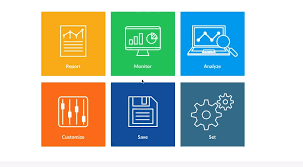In today’s digital age, where online marketing has become increasingly important, businesses need to track the effectiveness of their campaigns to optimize their strategies. One crucial aspect of this tracking is call tracking, which provides valuable insights into customer behavior and helps measure the conversion data of PPC campaigns. However, many brands hesitate to adopt call tracking due to concerns about brand equity and cost. In this comprehensive guide, we will explore what call tracking is, how it works, and how it can benefit businesses. By the end, you’ll have a clear understanding of this powerful tool and its potential to enhance your marketing efforts.
What is Call Tracking?
Call tracking involves the use of a unique phone number to track the source of incoming calls to a business. When a customer dials a call-tracked phone number, the call is routed through a call tracking system, which records essential details such as the caller’s phone number, date and time of the call, call duration, wait time, and whether the caller is unique or a repeat customer. This information provides crucial insights into the effectiveness of marketing campaigns, customer behavior trends, and opportunities for improving the sales process.
Call tracking can attribute each call to a specific campaign, either through static or dynamic numbers. Static numbers remain unchanged based on the site source and are assigned to a particular channel. These numbers usually incur a cost per number, in addition to a per-minute charge. On the other hand, dynamic numbers change based on the site source and require a number pool that corresponds to the traffic volume. Insufficient numbers in the pool can lead to attribution issues. Depending on the industry and legal regulations, businesses may choose to include call recordings and transcripts for an additional fee.
How Does Call Tracking Work?
There are multiple methods to implement call tracking, allowing businesses to adapt it to their operational needs. One common approach is to utilize a call tracking service that provides unique phone numbers. These numbers can be placed on websites, social channels, digital ads, and other marketing collateral. When a customer calls one of these numbers, the call tracking service records information about the call and provides it to the business.
Another method involves installing software or hardware on the business’s phone system. This software or hardware receives incoming calls, records call details, and then routes the call to the appropriate extension or phone number. This approach allows businesses to track calls made to their existing phone numbers without the need for unique tracking numbers.
Regardless of the method chosen, businesses must decide whether to use local or toll-free numbers. While some brands are concerned that toll-free numbers may affect their branding or local community connection, the impact of these concerns is still under debate. Testing both local and toll-free numbers is essential to determine which option best serves the brand’s needs.
Setting Up Call Tracking
Setting up call tracking requires careful planning and consideration of the channels to track and the budget available. To begin, businesses need to add a snippet of code to their Google Tag Manager or running element on their website. This code is designed to identify the main number and change it to a number associated with the source based on the UTM parameter.
For businesses opting to use a call tracking vendor, it is crucial to outline the structure of the sources and “root” numbers to be tracked. Common sources to track include direct traffic, organic searches, PPC campaigns, Google Business Profiles, call extensions, social channels, and local service ads. Brands can choose to segment their tracking as much or as little as desired. While segmenting campaigns down to the individual level provides precise data, it may require additional numbers and incur higher call tracking costs.
Choosing a Call Tracking Vendor
Selecting the right call tracking vendor is similar to choosing a cell phone provider. While the core service is the same, the level of support and reliability provided may vary. When evaluating call tracking vendors, consider the following criteria:
- Pricing: Understand how the vendor prices minutes and whether there are any additional costs for specific numbers.
- Transcripts and Recordings: Determine if the vendor offers transcripts and recordings and the associated upcharge.
- Coverage and Budget: Ensure that the vendor can provide full coverage for the initiatives you want to track within your budget.
- Technical Support: Assess the level of technical support available in case assistance is needed.
- International Coverage: If your business operates internationally, consider the availability and cost of international coverage.
Several call tracking solutions are available in the market. Let’s take a closer look at three popular options: Marchex, CallRail, and CallTrackingMetrics.
Marchex
Marchex focuses on dynamic numbers and requires accurate website traffic calculations to provide sufficient numbers. Brands must purchase enough numbers and minutes to cover the click and call volume. Insufficient traffic estimation may result in numbers being used by other brands or wasted spend. Marchex offers both simple and complex call tracking solutions, depending on the brand’s requirements. Customer support experiences with Marchex vary, depending on the level of support a brand qualifies for. Pricing for Marchex Essential starts at $500 per month, and access to more robust offerings requires a demo to determine pricing.
CallRail
CallRail is a popular call tracking solution known for its robust tracking and documentation features. It offers various integrations with third-party tools and has straightforward pricing that allows for easy scalability. While the default pricing is relatively affordable, additional features can increase the final price. CallRail provides options for local and toll-free numbers, lead generation forms, SMS messages, transcriptions, call quality scoring, keyword-level attribution, and thematic conversation reporting. However, customer support primarily relies on their support hub, with limited chat and phone support available.
CallTrackingMetrics
CallTrackingMetrics is a flexible call tracking solution that includes many features by default. Its pricing is accessible and covers most functionalities. CallTrackingMetrics offers local and toll-free numbers, CRM functionality, in-depth call analytics (in premium plans), call scoring, routing based on brand dictates, text and form options, and privacy compliance. Their customer support is highly regarded, providing support for setup and complex data analysis. They offer a premier consulting service for ala carte projects and premium support for agency partners.
It’s important to note that the choice of call tracking vendor depends on the specific needs and requirements of each business. Evaluating the available options and considering factors such as pricing, features, and customer support will help businesses make an informed decision.
How Does Call Tracking Help Brands Succeed Online?
Implementing call tracking can yield several significant benefits for brands striving to succeed in the online landscape. Let’s explore some of the key advantages:
1. Illuminate ROI on Marketing Initiatives
Call tracking plays a vital role in evaluating the return on investment (ROI) of various marketing initiatives. By tracking calls generated from different sources, brands can gain insights into which campaigns are truly delivering a return on ad spend (ROAS). This information allows marketers to allocate their resources effectively and optimize their strategies to focus on the most successful initiatives.
2. Enhance SEO Content Strategy
Call tracking provides valuable data for SEO content strategies. Brands can analyze the effectiveness of specific content plays by tracking the calls generated from relevant landing pages or blog posts. This information helps marketers understand which keywords and topics are driving engagement and conversions. By leveraging call tracking insights, brands can refine their SEO content strategy and produce more targeted and impactful content.
3. Audit Customer Success and Sales Interactions
Call recordings and transcripts offer a treasure trove of information for auditing customer success and sales interactions. By listening to recorded calls, teams can identify areas for improvement in their interactions with prospects and customers. They can gain valuable insights into what makes customers delighted and what factors contribute to churn. This data can guide training programs and help teams refine their customer service and sales techniques.
4. Streamline Business Operations
Many call tracking solutions offer additional features such as lead generation forms, CRM functionality, SMS marketing, and more. By choosing a call tracking vendor that integrates these services, businesses can streamline their operations and consolidate multiple functions into a single platform. This consolidation not only reduces costs but also improves efficiency and data management.
Conclusion
Call tracking is a powerful tool that enables businesses to track the effectiveness of their marketing campaigns and gain valuable insights into customer behavior. By using unique phone numbers and recording call details, businesses can attribute calls to specific campaigns, evaluate ROI, and optimize their strategies. Whether through a call tracking service or software/hardware integration, businesses can choose the method that best suits their operational needs. Selecting the right call tracking vendor, such as Marchex, CallRail, or CallTrackingMetrics, requires careful consideration of pricing, features, and support. Ultimately, call tracking helps brands succeed online by illuminating ROI, enhancing SEO content strategies, auditing customer interactions, and streamlining business operations. Incorporate call tracking into your marketing arsenal to unlock its full potential and drive success in the digital landscape.



No comments! Be the first commenter?